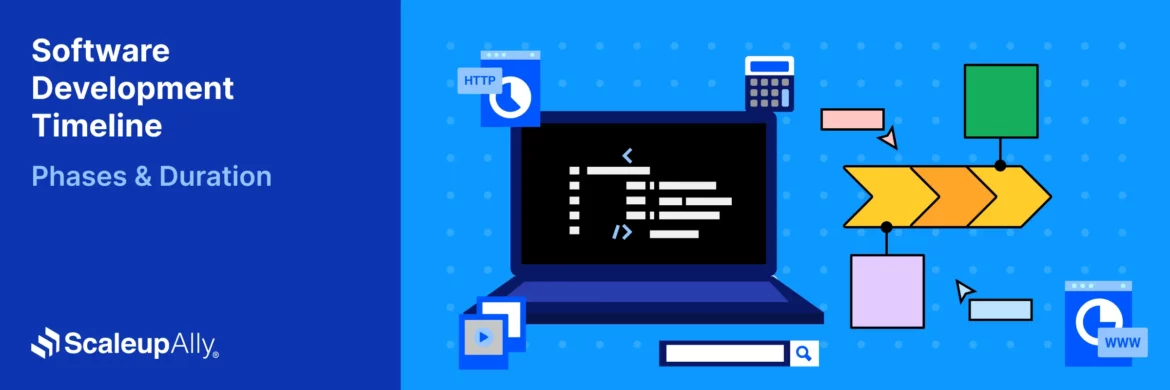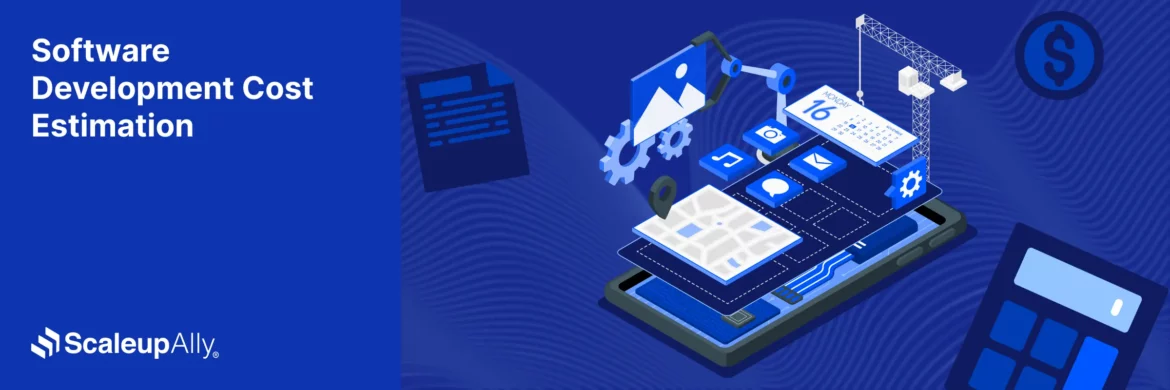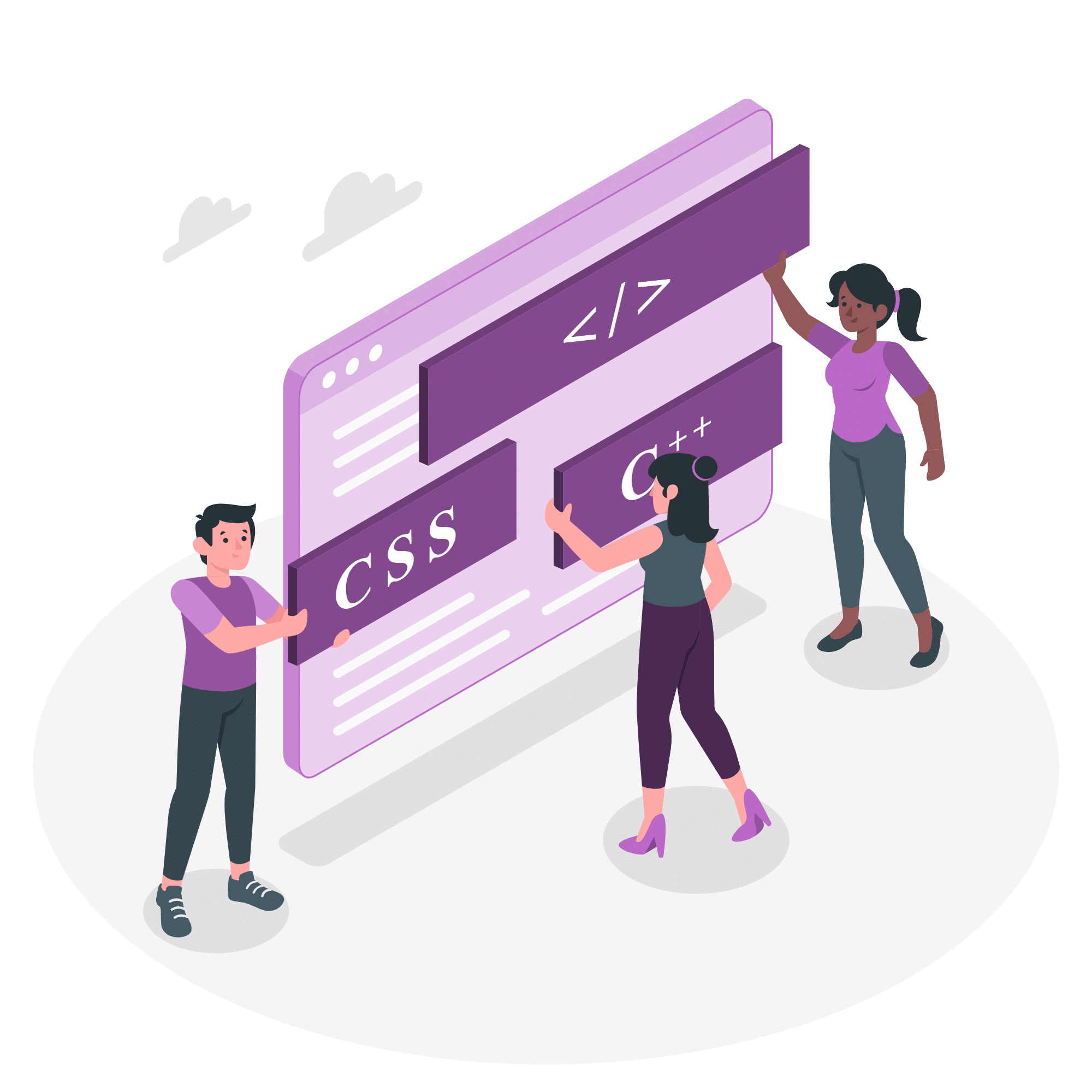
Custom Software Development Cost: A Comprehensive Guide
Suprabhat Sen | April 27, 2025 , 14 min read
Table Of Content
The only time most businesses discover the true cost of custom software development is after they’ve signed the contract. This shouldn’t be the norm. Many have learned their lesson painfully when their “reasonable” $50K estimate ballooned to $120K before they even launched the software. In such cases, the financial whiplash will almost always kill your business.
We are not sharing this to scare you off; far from that. Custom software can transform your operations and create massive competitive advantages. But you must walk in with your eyes wide open about costs. That’s what separates companies that thrive from those that get blindsided.
Custom software development costs go far beyond the developer hourly rates we know about. It’s a complex situation that involves project scope, project timeline, technical complexity and ongoing maintenance that most cost calculators conveniently ignore.
The difference between a $50,000 project and a $500,000 one often comes down to decisions you make before a single line of code is written. You are in luck because in this blog, you will discover the cost of custom software development in 2025. You will also learn about various factors influencing cost and pricing models that will help you make informed decisions.
Key Takeaways
- Custom software development costs between $25,000 and $500,000+, with pricing heavily dependent on the location of the development team and the level of complexity of the desired project.
- The cheapest initial bid often becomes the most expensive long-term commitment. We recommend that you focus on the total cost of ownership over 3-5 years rather than just the upfront price tag.
- Different pricing models (fixed-price, time and materials, milestone-based) shift risk between client and developer – choose based on your project needs and risk tolerance.
- You can significantly reduce development costs by starting with an MVP, leveraging open-source solutions, using cross-platform technologies, and investing in thorough planning.
Cost of Custom Software Development: The Short Answer
- Cost of Custom Software Development: The Short Answer
- What Influences the Cost of Custom Software Development?
- Estimating Custom Software Development Costs
- Pricing Models Used in Custom Software Development
- How to Reduce Custom Software Development Cost?
- How Can ScaleupAlly Help in Building Cost-Effective Custom Software?
- Conclusion
- Frequently Asked Questions
There is no straight answer to the question “how much does custom software development cost” because certain factors influence the average cost of custom software development (which we will discuss next). But going straight to the point, custom software development generally costs between $25,000 to $500,000+, with most small to mid-sized business projects falling between $50,000 and $250,000.
What Influences the Cost of Custom Software Development?

The previous cost estimate is the simplified version because again, the question of “how much does custom software cost” is like asking “how much does a house cost?” without mentioning size, location or materials. Custom software development pricing varies based on several key factors including:
1. Complexity of your Software
Nothing impacts your custom software development cost more than scope (which includes the overall size, complexity, and features). A simple inventory management system might run $30K-80K, while a multi-platform enterprise solution with complex business logic can easily exceed $500K.
However, the complexity we talk about isn’t just about features but how these features interact and the business rules governing them. Each additional integration point with external systems typically adds 10-25% to your baseline cost. There are so many scenarios in countless projects where “just one more feature” ends up bloating the project and doubling the original budget.
2. The Location of the Development Team
Geography matters enormously (Also Read Offshore Software Development Rates by Country [2025]). North American agencies typically charge $100-250 per hour, while Eastern European teams might range from $50-100, and South Asian teams from $25-50. But beware the false economy of making decisions on hourly rates alone.
Many companies find that lower hourly rates often require more oversight hours from your team and can extend timelines. The custom software development cost might appear lower initially, but it ends up higher due to communication issues, cultural differences in work approach, and time zone complications.
3. Technology Stack Selection
Your tech stack choice carries long-term financial implications. Cutting-edge technologies may offer competitive advantages but typically command premium developer rates (sometimes 30-40% higher).
Meanwhile, legacy technologies might have lower initial custom software development costs but create expensive technical debt down the road. Popular frameworks like React, Angular, and Node.js usually provide the best balance of developer availability and reasonable rates. Specialized technologies like blockchain or AI/ML components can add $100K+ to projects due to the scarcity of qualified developers.
Also Read: 21 Latest Trends in Custom Software Development
4. UI/UX Design
The days of basic interfaces meeting user expectations are long gone. Modern software requires intuitive designs with responsive layouts for multiple devices. Complex interfaces with animations, visualizations, and complex user flows can comprise 25-40% of your development budget.
Many stakeholders underestimate this aspect of custom software development cost until they see the wireframes. The design-development handoff poses another hidden expense.
5. Testing and Quality Assurance Requirements
Mission-critical applications demand rigorous testing, which can comprise 20-35% of your total project cost. Regulated industries like healthcare, finance, and government require extensive documentation and validation procedures that further drive expenses.
While it’s tempting to cut corners here, inadequate testing is among the costliest mistakes in software development.
6. Post-Launch Support and Maintenance
The often-overlooked reality is that software is never “done.” Annual maintenance typically runs 15-25% of initial development costs for bug fixes, security updates, and minor enhancements. Major version updates might require 50-100% of your original investment every few years. Smart organizations factor these ongoing custom software development costs into their initial budgeting.
Even perfectly executed projects require regular updates as operating systems change, security threats evolve, and business requirements shift.
Estimating Custom Software Development Costs
This is quite a difficult one because getting an accurate estimate for your software project feels like trying to predict the weather six months from now. It is possible, but it comes with a significant margin for error. Having been on both sides of this equation (both requesting and providing estimates), we’ve learned that understanding the estimation process improves accuracy.
What sinks most projects (in terms of estimation) is unstated assumptions. Your development partner might assume you’ll provide all content, while you assume they’ll handle it. These misunderstandings can add tens of thousands to your final bill.
So we recommend that you request detailed breakdowns showing hours allocated for each project phase. If an estimate lacks specifics about testing time, project management overhead, or post-launch support, it’s probably undercooked.
Smart companies also request references from similar projects. Past performance reveals far more about a team’s estimation accuracy than any proposal document could.
The lowest bid rarely represents the best value. We’ve cleaned up enough failed projects to know that cutting corners on initial development virtually guarantees paying premium rates for emergency fixes later.
The most reliable estimates come from teams that ask uncomfortable questions about your requirements rather than simply saying “yes” to everything. When someone challenges your assumptions or timeline expectations, they’re not being difficult but just trying to save you money.
For SMEs, accurate estimation becomes even more critical due to the significant investment relative to company size. The most reliable estimates for medium enterprises come from development teams with specific SME experience. Generic estimation approaches often miss the nuanced requirements that SMEs face. Consider partnering with specialists in custom software development for SMEs who can balance feature complexity with budget realities.
Pricing Models Used in Custom Software Development
Most software development companies use one of five methods to calculate your custom software development price, each with distinct advantages and blind spots.
But we must state that it’s less about which method you choose and more about how well it aligns with your project’s unique characteristics.
1. Fixed-Price Contracts
This remains popular despite its limitations. The developer commits to delivering specified features by a certain date for a predetermined amount. This works well for smaller projects with clear requirements, but becomes problematic when scope changes, and scope always changes.
Developers protect themselves by padding estimates and restricting change requests, while clients often get exactly what they specified rather than what they actually need.
2. Time and materials pricing
This method offers transparency but requires trust. You pay for actual hours worked at agreed-upon hourly rates. This model adapts beautifully to evolving requirements but demands diligent oversight to prevent runaway costs.
It works best when you have a reliable relationship with your software development partner and can actively participate in prioritization decisions throughout the project.
3. Milestone-based Payment Structures
This model breaks projects into discrete deliverables with associated payments. This provides natural checkpoints to evaluate progress while giving developers enough security to proceed confidently. The challenge comes in defining meaningful milestones that align with business value rather than arbitrary technical divisions.
4. Retainer Model
There’s also the retainer model which is best for ongoing development relationships. Your company secures a dedicated development team for a monthly fee, ensuring consistent access to developers who understand your business. While this typically costs more initially, teams become increasingly efficient as they gain familiarity with your systems and processes.
5. Value-based Pricing
Value-based pricing ties compensation directly to measurable business outcomes. For example, if software reduces operational costs by $500K annually, the developer might receive a percentage of verified savings. This approach beautifully aligns incentives but requires sophisticated tracking mechanisms and mutual trust.
How to Reduce Custom Software Development Cost?
Most advice about cutting software costs focuses on finding cheaper developers. This is a short-sighted approach that often backfires. After managing dozens of software projects, we’ve discovered that actual savings come from decisions made before development begins.
Here are proven strategies that can help you reduce costs without sacrificing quality:
1. Start With a Minimum Viable Product
Building only essential features first could cut initial development costs by 40-60%. An MVP approach forces prioritization by identifying core functionality that delivers immediate value while deferring “nice-to-have” features. This doesn’t mean creating something shoddy; it means focusing development dollars on features that directly support your primary business objectives.
2. Use Open-Source Solutions and Frameworks
Don’t pay developers to reinvent functionality that already exists. Modern development uses open-source components for everything from authentication to payment processing, potentially saving hundreds of development hours.
Beyond just libraries, consider open-source platforms like WordPress or Drupal for content-heavy applications. Just ensure your developers thoroughly vet any third-party code for security vulnerabilities and ongoing maintenance.
3. Choose Cross-Platform Technologies
Native development for multiple platforms multiplies costs. Cross-platform frameworks like React Native, Flutter, or Xamarin let developers write code once and deploy across iOS, Android, and sometimes web platforms. While performance-critical applications might still require native development, most business applications function perfectly well using these frameworks.
The efficiency gains typically reduce multi-platform development costs by 30-40%. Just be aware that highly platform-specific features may require custom native modules that reduce these savings.
4. Implement Agile Development Practices
Agile is a cost-control mechanism. By breaking development into short sprints with regular deliverables and feedback, you catch misunderstandings early when they’re cheaper to fix. The traditional waterfall approach often reveals major issues only after significant investment.
Agile’s iterative approach also prevents over-engineering by continuously refocusing effort on actual business needs rather than theoretical requirements. Companies transitioning to true agile practices typically see 15-30% efficiency improvements in their development processes.
5. Prioritize Thorough Planning and Documentation
The cheapest bugs to fix are those prevented through proper planning. Investing in detailed wireframes, user stories, and technical specifications might seem expensive upfront, but it reduces costly mid-development changes
Clear documentation also speeds development by reducing questions and misunderstandings.
6. Consider Outsourcing
Outsourcing remains viable when approached strategically. Rather than outsourcing entire projects, consider outsourcing specific components while maintaining architectural control in-house. This leverages cost advantages while minimizing communication overhead and quality risks.
Successful outsourcing requires clear specifications, regular code reviews, and maintaining intellectual property control. When done right, this can reduce development costs by 30-50% compared to fully in-house development without sacrificing quality.
How Can ScaleupAlly Help in Building Cost-Effective Custom Software?
After 7 years in software development, we’ve seen the same mistakes drain budgets unnecessarily. ScaleupAlly evolved specifically to eliminate these pitfalls.
Unlike agencies that throw bodies at problems, we’ve refined a lean approach that identifies cost inefficiencies before writing a single line of code. We don’t just build software, we build the right software. Our process forces the difficult prioritization conversations most developers avoid, ensuring your investment targets features with actual ROI rather than wishlist items.
If you are ready to stop overpaying for custom software, schedule a 30-minute consultation where we’ll identify at least three specific ways to reduce your development costs without compromising quality. Your budget deserves better than industry-standard waste.
Also Read: 21 Custom Software Examples: Real-World Use Cases
Conclusion
The difference between a successful software project and an expensive disaster rarely comes down to technical skills. It’s about alignment—business needs translated faithfully into technical solutions, with realistic expectations on both sides.
Do not ignore the deeper questions that determine success: Does this team truly understand our business problem? Have they built similar solutions before? Will they push back when our requests don’t make sense?
Custom software represents one of the most significant investments your business will make. The right development partner will challenge your assumptions, educate you on trade-offs and guide you towards solutions that balance immediate needs with long-term flexibility.
The most expensive software isn’t the one with the highest price tag, but the solution that fails to solve your actual problem, or worse, creates new ones. Choose wisely, plan thoroughly, and remember that software is never finished; it evolves alongside your business.
Whatever path you choose, make sure your development team is as invested in your business outcomes as they are in their technical solutions. The code they write today will shape your company’s possibilities tomorrow.
Frequently Asked Questions
Q: Is custom software expensive?
Custom software can seem costly upfront, but it’s built for your needs. It often saves money over time by improving efficiency and reducing the need for multiple tools or workarounds.
Q: What is the average cost of custom software development?
The cost varies based on features, complexity, and timeline. On average, it can range from $25,000 to $500,000+. A small app costs less, while large systems cost more.
Q: How much does it cost to build software for a small business?
For small businesses, custom software typically costs between $50,000 and $250,000. The price depends on what you need it to do and how quickly you want it built.
Q: How much does it cost to build custom enterprise-level software?
Enterprise software is more complex and can cost anywhere from $100,000 to several million dollars. The final price depends on system size, integrations, user numbers and specific business needs.
Related Blogs

Top 20 Emerging Technologies of 2026
Discover the top 20 emerging technologies of 2026. Explore which innovations are driving change across healthcare, finance, manufacturing, and other crucial industries.
ScaleupAlly Team
Dec 16 ,
9 min read

Software Development Timeline: Phases, Duration & Estimation Guide
Understand the software development timeline with phase durations, key factors, hidden delays, and practical methods to estimate project time.
Suprabhat Sen
Nov 29 ,
16 min read

Software Development Cost Estimation Guide: What’s Included & What Affects the Price
Explore software development cost components, major pricing factors, and practical estimation methods to plan your project accurately from start to finish.
Suprabhat Sen
Nov 29 ,
14 min read



